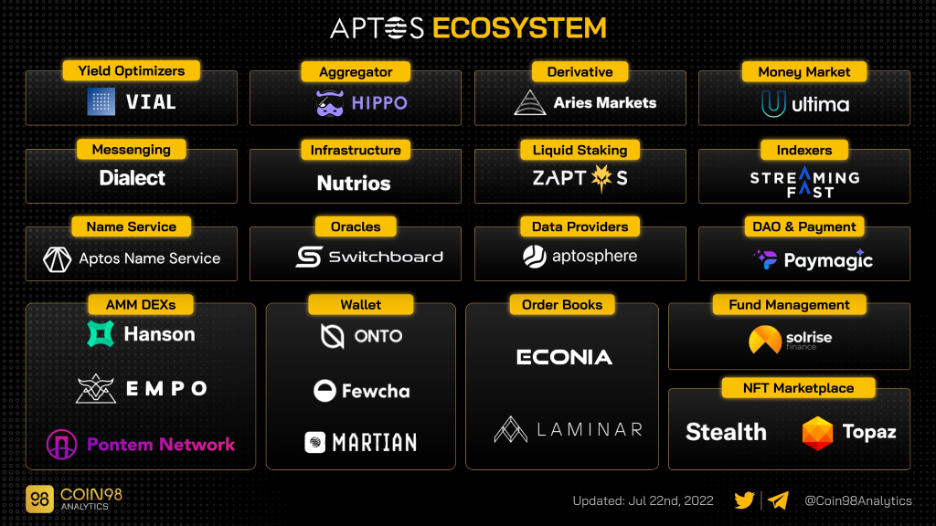APTOS is a state-of-art layer-1 chain developed by ex-META employees using the Move Language, with a sole purpose of delivering high-end vigorous consensus mechanisms, smart contracts, and decentralization. Its objective is to build a blockchain that brings overall appropriation to Web3 and allow the developers to solve real world problems.
APTOS, unlike other traditional blockchains, doesn’t follow the idea of one by one execution of transactions. It follows a simultaneous execution of multiple contracts in order to be efficient. This increases the throughput of transactions and promotes scalability.
Concept of Action
APTOS uses the new PoS (Power of Stake) consensus mechanism along with BFT (Byzantine Fault-Tolerant) and is based upon multiple designs.
APTOS uses a Rust based programming language MOVE, which promotes safety, security and fast paced processing of transactions. MOVE is responsible for executing smart contracts without delays. The people at APTOS worked extensively on MOVE to minimize control restrictions and promote preservation; this was done with broader support for Web3 use cases.
As compared to Ethereum, APTOS arguably offers more pros. This is because APTOS is built using MOVE. To take an example, APTOS enables the users to modify their personal key, as well as, it’s easier to verify blockchain commands of APTOS as compared to Ethereum.
APTOS’s united, channelized and parallelized technique of transaction processing enables it to increase throughput along with low latency in transactions. To put it in layman terms, every stage of the transaction on APTOS is completely independent.
The low latency of BFT allows gross transactions to go as high as 150,000 transactions per second (tps) as compared to Ethereum’s Mainnet network’s 12 to 15.
Analysis of APTOS’s Ecosystem
APTOS’s ecosystem includes various projects running individually as well as in parallel to each other.

APTOS’s ecosystem comprises of:
- dApps on APTOS
- APTOS Names- APTOS Names allows the users to register their own domains on the blockchain network, like Ethereum’s name service.
- Aries Markets- It is a decentralized margin trading platform which allows the user to lend and borrow on dynamic interest rates.
- Wallets on APTOS
- Petra wallet- It can be said that Petra is APTOS’s own wallet as it was developed by the APTOS labs team. Users can add it to their chrome extension and use it to transfer their digital assets, manage their NFTs as well as interact with dApps on APTOS. Other wallets on APTOS include, Martian wallet, Fletch wallet etc.
- NFT Marketplace
- Topaz- It can be said that Topaz was the pioneer of the NFT marketplace on APTOS. It is a digital marketplace for non-fungible tokens (NFTs) which allows the users to find out the varied collections of NFTs. Moreover, it also allows them to transfer their assets to different accounts and wallets.
- DEXs
- Pontem Network- This is the first DEX on the APTOS network and is invested by Alameda, Delphi etc. with a valuation of nearly 4.5 million dollars. Right now, it is in the testnet stage and is being tested by approximately 75,000 testers.
- Laminar- Laminar labels itself to be the first ever wholly decentralized spot decentralized exchange on APTOS. It is still in the developing process and will be inspired by pivotal features like order delays and interface inspired by API, UI etc.

Nancy J. Allen is a crypto enthusiast, with a major in macroeconomics and minor in business statistics. She believes that cryptocurrencies inspire people to be their own banks, and step aside from traditional monetary exchange systems. She is also intrigued by blockchain technology and its functioning. She frequently researches, and posts content on the top altcoins, their theoretical working principles and technical price predictions.


 Home
Home News
News







